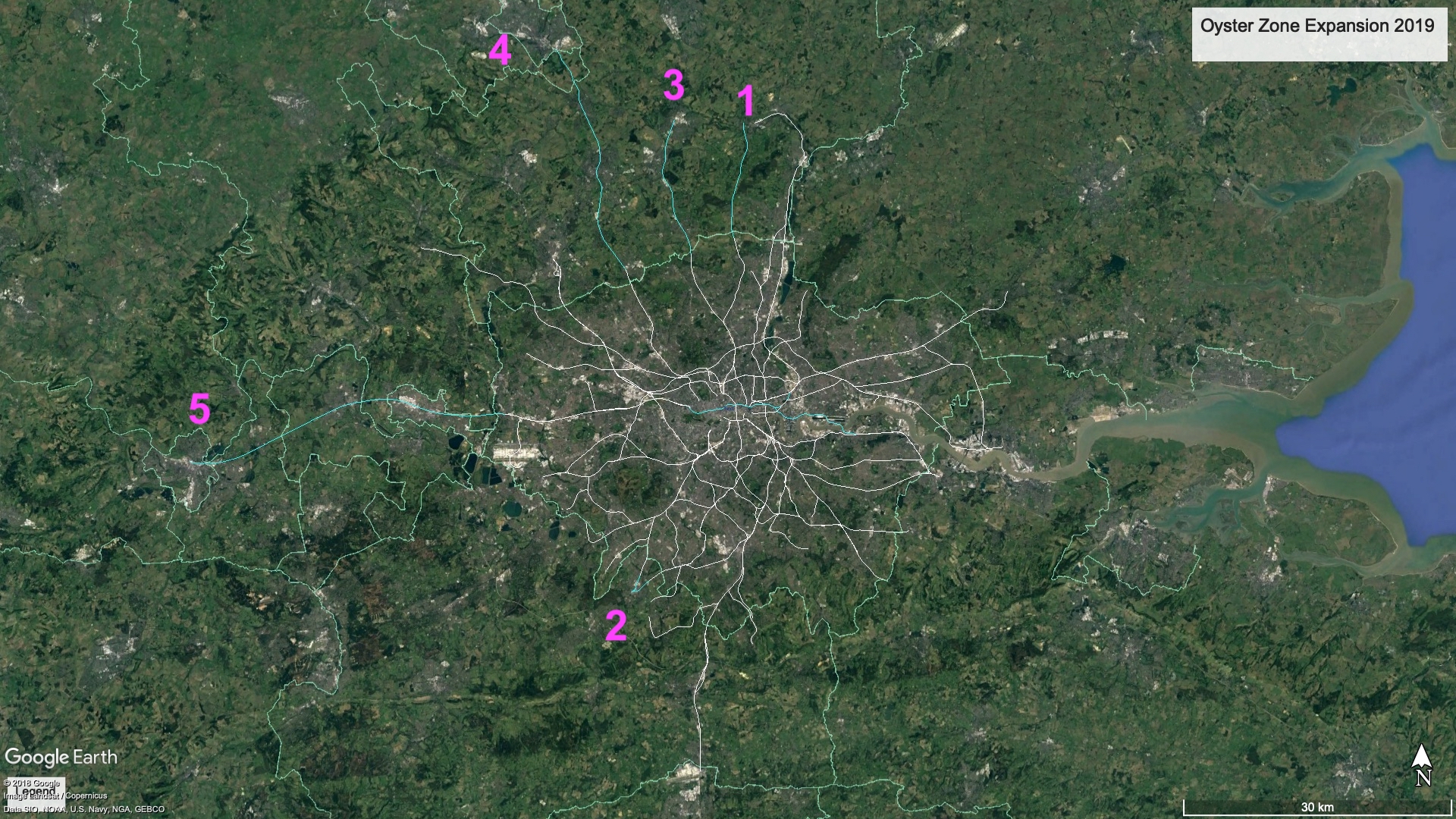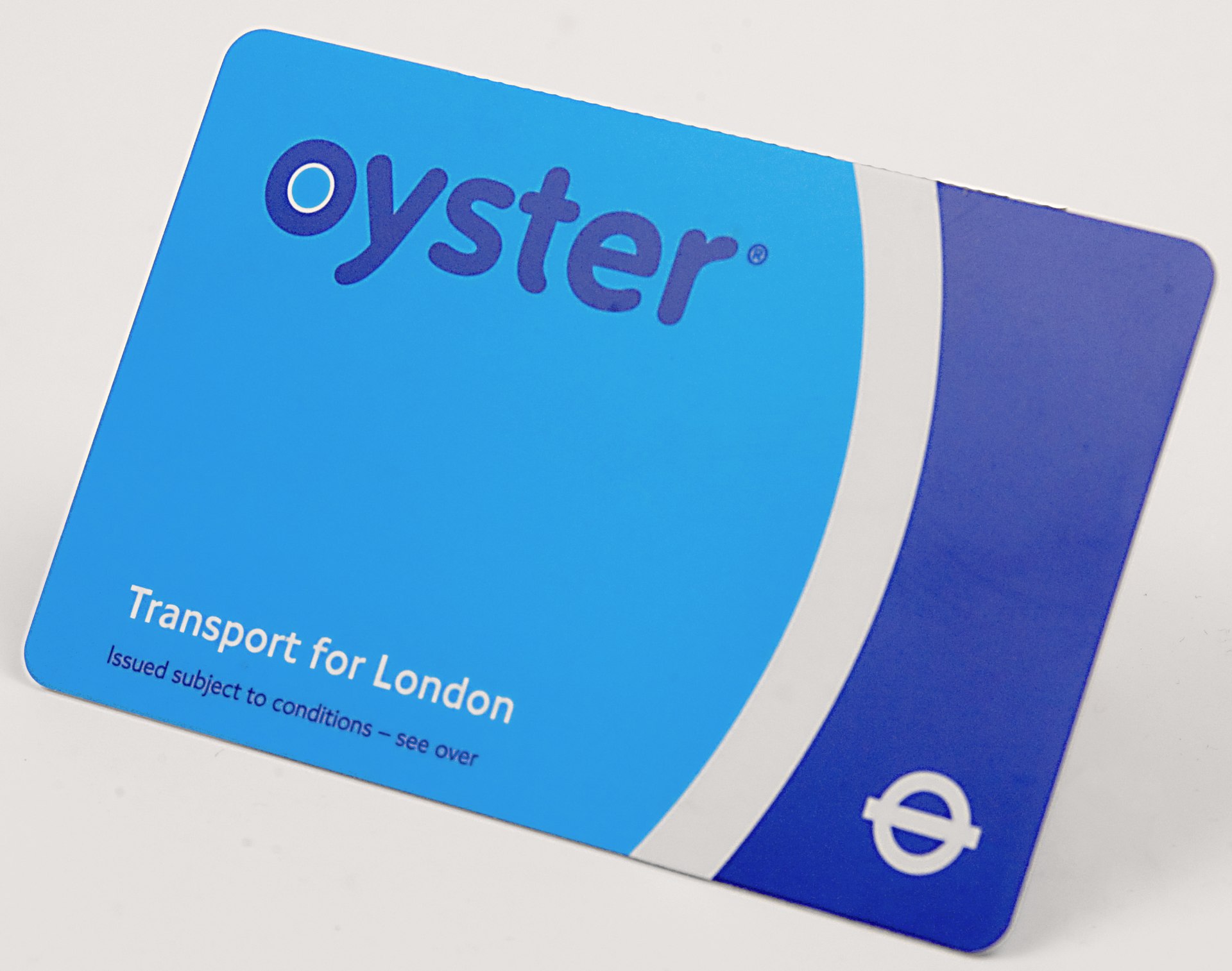The Greater London transport network is set to receive a significant upgrade in 2019 with several Oyster Zone expansions that will extend the popular pay-as-you-go (PAYG) zone deeper into the capital’s key commuter towns. In total, it is likely that we will see up to five extensions, reaching Hertford North, Epsom, Welwyn Garden City, Luton Airport Parkway, and Reading.
The last time the Oyster Zone was expanded was in January 2016, when the routes to Gatwick Airport and Hertford East were added to the network. Up until this point, the Oyster Zone had largely followed the boundaries of Greater London, with the Metropolitan line being the glaring exception. The parts of the Oyster Zone that were outside of Greater London included only a handful of the nearest commuter towns, such as Shenfield, Dartford, Watford, and Grays. This latest change, however, extended the zone well beyond 10 km from the nearest Greater London boundary and redefined the geographical reaches of London’s railway network.
2019 Expansion
Nearly 3 years later, the Railway Gazette is reporting that the Department for Transport and TfL are planning for Oyster Zone extensions to Epsom, Hertford North, Welwyn Garden City, and Luton Airport Parkway. Adding the Elizabeth line branch to Reading, which could still open next year, we are looking at a substantial Oyster Zone expansion.

While the Epsom expansion is rather subdued and probably should have been extended all the way to Dorking to match the extent of the other expansions, the other four make it clear that the Oyster Zone will likely grow to cover the whole of the London Metropolitan Area, transcending outdated current political boundaries.
Impact on accessibility
From an accessibility perspective, the expansion have added benefits. In addition to allowing simplified payment methods integrated with the whole network, the expansions will bring additional step-free stations into the Oyster Zone while also potentially enabling the expansion of the Freedom Pass. For example, there are currently no Oyster Zone step-free stations coming out of Paddington apart from Heathrow, despite Slough, Maidenhead, and Reading all having step-free access. Once the Elizabeth Line extends to Reading, all of these important commuter towns will be connected even more closely to Central London.
With regards to the Freedom Pass, it does not seem to grow at quite the same rate as the Oyster Zone (Freedom Pass Map). This means that while it may not reach Luton Airport, and Hertford North, and Welwyn Garden City (it currently does not serve Gatwick or Hertford East), it is a lot more likely to reach Epsom and at least part of the Reading branch, as it is a TfL-run service.
Future changes?
As can be seen from the map above, the Oyster Zone is incredibly unbalanced, with many communities just outside Greater London still being excluded (Shepperton, Gerrards Cross, Staines). These extensions will only lead to more calls for further extensions. For example, if Luton Airport is included, then why can’t Stansted? Also, how can Slough be in the Oyster Zone while Windsor, with its substantial tourist appeal, is not?
The Railway Gazette’s article does mention a public consultation that will be launched early next year to examine further extension proposals, so hopefully we will see many changes in the future. Like it or not, London’s commuter belt extends far beyond its official borders, and it is time that its transport network began to reflect that.


when the event will held?
I Think the Oyster Card Should Expand to Clacton on Sea, Ipswich, Hastings, Eastbourne, Brighton, Portsmouth, Peterborough, Cambridge, Nuneaton and Margate.
Excellent presuentation of future trayvel fast and convenient access to London and surrounding essential towns and districts. Well done.